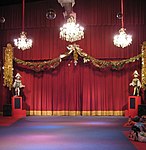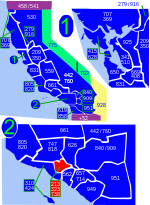Vista Hermosa Natural Park

The Vista Hermosa Natural Park is an urban public park located in Echo Park, Los Angeles, immediately west of Civic Center, Los Angeles. Vista Hermosa Natural Park sits on a former oil field of 10.5 acres (4.2 ha), bounded by Toluca Street and West 1st Street, Los Angeles. The park includes walking trails, streams, meadows, oak savannahs, picnic grounds, a nature-themed playground, and a soccer field.The $15-million park was opened on July 19, 2008 and was the first to open in Downtown Los Angeles in over 100 years. The park is managed as a partnership among the Los Angeles Unified School District, the City of Los Angeles, and the Mountains Recreation and Conservation Authority (MRCA).
Excerpt from the Wikipedia article Vista Hermosa Natural Park (License: CC BY-SA 3.0, Authors, Images).Vista Hermosa Natural Park
North Edgeware Road, Los Angeles Echo Park
Geographical coordinates (GPS) Address Nearby Places Show on map
Geographical coordinates (GPS)
| Latitude | Longitude |
|---|---|
| N 34.06172 ° | E -118.257047 ° |
Address
North Edgeware Road 100
90026 Los Angeles, Echo Park
California, United States
Open on Google Maps








